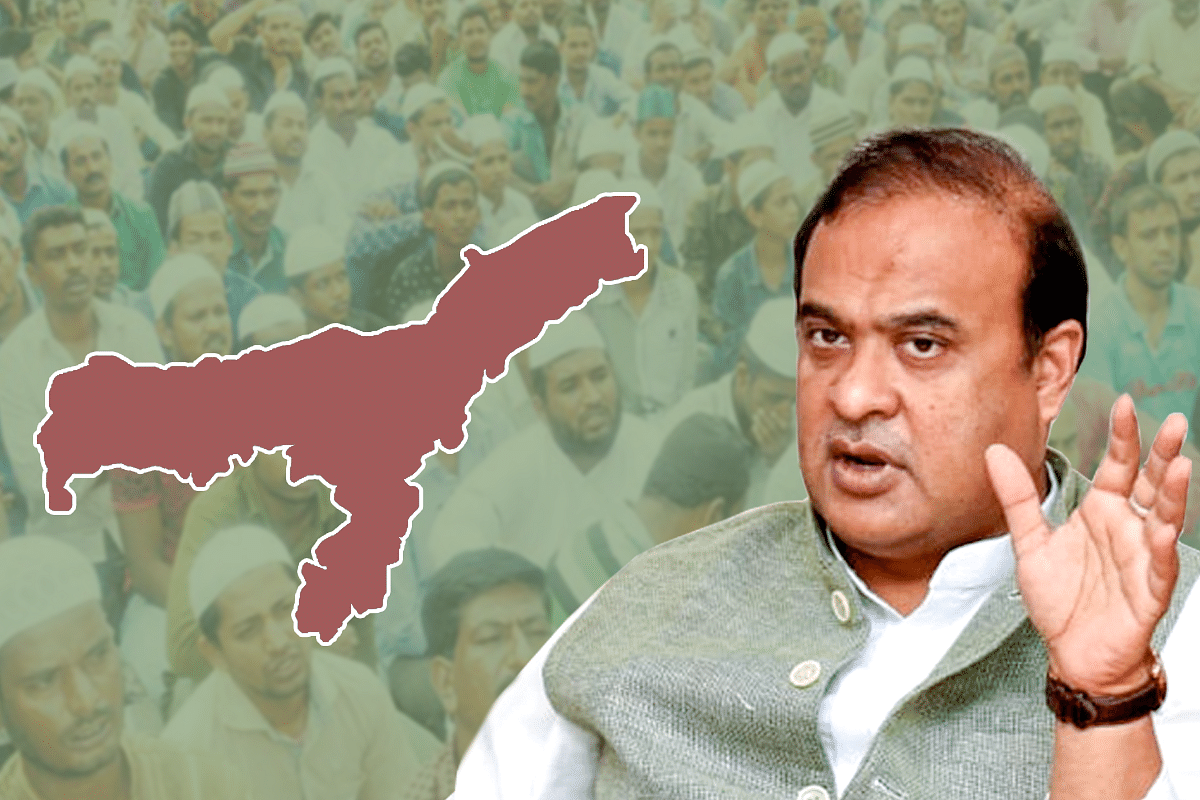Context
‘Indigenous’ Tag For Assamese Muslims: How They Benefit

Assam Chief Minister Himanta Biswa Sarma
The BJP-led coalition government in Assam has awarded the ‘indigenous’ tag to five Muslim communities of the state — Goriya, Moriya, Deshi, Julah, and Syed.
And why’s that? It will distinguish the Assamese Muslims from Bengali-speaking Muslims, an overwhelming majority of who are migrants or descendants of migrants from East Bengal, which later became East Pakistan and then Bangladesh.
Assamese Muslims: They number just about 42 lakh, forming about 27 per cent of Assam's total Muslim population (1.46 crore, or a little over 40 per cent of the state’s population).
Is there such a thing as ‘indigenous’? A super-quick timeline can help explain this:
Thirteenth century: Islam came to Assam with Bakhtiyar Khalji’s invasion of the region.
Fifteenth century: A local Muslim ruler carried out another round of conversions.
Seventeenth century: A Sufi mystic, who is revered as ‘Azaan Pir’ in Assam, influenced many to convert to Islam. The descendants of these converts, who have retained their own distinct identity, are the ‘indigenous’ Muslims of Assam.
So, who's picked? Five communities have been given the ‘indigenous’ tag.
Goriyas are descendants of soldiers from Gaur (Bengal), who came to Assam as part of the invading Mughal army and settled down in the region.
Moriyas are descendants of the soldiers of Turbak Khan, the commander of an army sent by the Sultan of Bengal to invade Assam in 1532 CE. Khan was defeated, his soldiers taken captive, and they married into the local community and settled down in Assam. Moriyas are associated with the traditional brass and bell metal industry in Assam.
Deshis are converts from the indigenous Koch-Rajbongshi, Rabha, Boro, and Mech tribes of Assam. Ali Mech, a tribal chief in the thirteenth century CE, was the first tribal convert to Islam, and many of his subjects from different indigenous tribes also became Muslims.
Julahs are converts from the tea tribes — the tribals from Chotanagpur Plateau who were brought by the British to work as labourers in the tea gardens of the state.
Syeds claim to be descendants of Prophet Mohammed. Many say that the clerics or imams who were part of invading Mughal armies that were defeated by the Ahoms, stayed back in the region and are perhaps the progenitors of the Syed community.
Different from Bengali Muslims, the indigenous Muslims of Assam speak Assamese, practise a syncretic form of Islam, and follow the age-old cultural traditions of Assam.
They retain many of the cultural and social practices that their forefathers practised before their conversion to Islam.
Except for their religion, there is little to distinguish them from Assamese Hindus.
While most Bengali-speaking Muslims wear lungis and sport long beards and skull caps at all times, Assamese Muslims dress and conduct their lives like Assamese Hindus.
Many Bengali-speaking Muslims are Islamists while Assamese Muslims are not.
How the special tag helps: Assam government statistics show that Bengali-speaking Muslims corner almost all the benefits of central and state schemes meant for the welfare of minorities and Assamese Muslims are left out.
The Clause 6 of the Assam Accord mandates “Constitutional, legislative and administrative safeguards” in order to “protect, preserve and promote the cultural, social, linguistic identity and heritage of the Assamese people”. The five indigenous Muslim communities are included in the ‘Assamese people’ category.
Because the safeguards may include political reservation for ‘Assamese people’, Assamese Muslims will get much more representation and will also be able to enjoy more benefits accruing out of state and central welfare schemes.
The new categorisation also meets the long-standing quest of the Assamese Muslims for an identity distinct from that of Bengali-speaking Muslims, many of whom are perceived to be illegal migrants (or their descendants) from Bangladesh.
Support Swarajya's 50 Ground Reports Project & Sponsor A Story
Every general election Swarajya does a 50 ground reports project.
Aimed only at serious readers and those who appreciate the nuances of political undercurrents, the project provides a sense of India's electoral landscape. As you know, these reports are produced after considerable investment of travel, time and effort on the ground.
This time too we've kicked off the project in style and have covered over 30 constituencies already. If you're someone who appreciates such work and have enjoyed our coverage please consider sponsoring a ground report for just Rs 2999 to Rs 19,999 - it goes a long way in helping us produce more quality reportage.
You can also back this project by becoming a subscriber for as little as Rs 999 - so do click on this links and choose a plan that suits you and back us.
Click below to contribute.
Latest